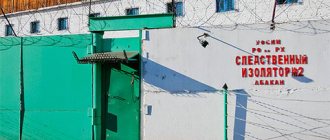Bookmarked: 0
What is smuggling? Description and definition of the concept.
Smuggling is the movement of valuables or goods across the customs border, in which the goods are partially or completely hidden from customs control, or during their transportation fraudulent documents or false declarations are used. Smuggling can be the movement of goods that are prohibited for transportation across the border - drugs, weapons, strategically important raw materials, cultural values, etc. As well as the movement of other goods, when it is carried out on a particularly large scale, and at the same time there is abuse of official rights on the part of authorized persons position. Smuggling is also considered the failure to return valuables to the territory of the state when they have been moved with the obligatory condition of their return.
Smuggling (Italian contrabbando, from contra - against and bando - government decree) is the illegal movement of valuables, goods and other items across the state border, the movement of valuables and other items that are accompanied by a violation of the requirements of customs legislation.
The object of smuggling is the interests or social relations that are associated with the protection of foreign economic activity.
Contraband item
In the Russian Federation, the subject of smuggling, according to the explanation of the Plenum of the Supreme Court of the Russian Federation in Resolution No. 6 of May 27, 2008 “On judicial practice in cases of smuggling”, according to paragraph 3 of this Resolution, can be any movable property that is moved through the state border and is recognized as a product by the Customs Code of the Russian Federation. Contraband item – and other items that are not goods (for example, a manuscript of a scientific article or an object of intellectual property on a tangible medium that does not have the price of a product, an industrial design). The subject of smuggling can also be Russian currency, traveler's checks, foreign currency, foreign and domestic securities in documentary form.
Criminal consequences
Of course, smuggling has a negative impact on law and order in any state. Today there is a significant globalization of economic relations in the world. At the same time, the boundaries of domestic crime are gradually disappearing. The diverse communities for which smuggling has long been a business are becoming increasingly sophisticated today. They are provided with financial, intellectual, and material resources. Smugglers often buy the favor of authorities and police representatives. They are able to lobby for necessary decisions in government agencies, initiate investigations, etc.
Methods of smuggling
In 2004, smugglers were able to put into operation a homemade illegal “vodka pipeline” on the border of Russia and Estonia; a similar one operated on the Lithuania-Latvia border.
- Hides and containers in carry-on luggage and conventional types of transport
- “Mule” or “camel” - used mainly for drug smuggling. The courier swallows containers with cargo and leaves by transport. It is easily detected and causes the death of the courier when the container ruptures.
- Through underground tunnels
- By armed means
- Using off-road vehicles
- By pack and horse-drawn transport
- With the help of general aviation (the most famous example is the activities of Air America, organized by the CIA, which was involved in drug and weapons smuggling in Southeast Asia)
- Using boats, small vessels, homemade semi-submarines and submarines (narco-submarines)
- In medical and funeral supplies
- With the help of trained animals
- “Gray” cargo is the most common scheme. Cargo for one purpose is brought into the country under a different name with the help of corrupt government officials
- Diplomatic cargo
Recommendations
- “Man detained during tobacco smuggling raids.” mynewsdesk.com
. Archived from the original April 18, 2022. Retrieved April 28, 2018. - "Internet etymological dictionary". Archived from the original April 2, 2015. Retrieved March 1, 2015.
- N. S. B. Gra, The Early English Customs System
(OUP, 1918) - N.J. Williams, Contraband Cargoes: Seven Centuries of Smuggling
(London, 1959) - "Bristol Unhgfgvf - News - 2012: The Illegal Economy." Archived from the original November 4, 2014. Retrieved March 1, 2015. Dr. Evan Jones
- Hugh W. Bowen, "Privilege and Profit: East Indian Commanders as Private Traders, Entrepreneurs and Smugglers, 1760–1813", International Journal of Maritime History
, 19/2 (2007), pp. 43–88. - E. T. Jones, 'Illicit business: accounting for smuggling in mid-16th-century Bristol', Review of Economic History
, 54 (2001);
E. T. Jones, Inside the Illegal Economy: Reconstructing the Smuggling Trade in Sixteenth-Century Bristol
(Ashgate, June 2012) - N. J. Williams, "Francis Shaxton and the Elizabethan Port Books", English Historical Review
66 (1951) - Defoe, Daniel (1724). A Journey Through the Whole Island of Great Britain: A Letter III
. London. Archived from the original June 2, 2015. Retrieved May 13, 2013. - The darkness of the moonless night made it possible to move furtively.
- Paul Theroux, Kingdom by the Sea
, 1983:84. - Spangle, Stephen L. (February 11, 2008). “Biological Opinion for Proposed Installation of 5.2 Miles of Main Fence Near Lukeville, Arizona” (PDF). US Fish and Wildlife Service. p. 3. In the archive (PDF) from the original 10/28/2008. Retrieved 2008-10-11.
- Nunez-Neto, Blas; Kim, Yul (2008-05-14). "Border Security: Barriers Along the US International Border" (PDF). Federation of American Scientists. paragraph 24. In the archive (PDF) from the original dated 10/11/2008. Retrieved 2008-10-11.
- "Tobacco underground". International Consortium of Investigative Journalists
. Archived from the original November 26, 2012. Retrieved November 26, 2012. - “Cigarette smuggling is linked to terrorism.” Washington Post
. 2004-06-08. In the archive from the original dated 2008-08-08. - "Human Smuggling in Mexico." In the archive from the original dated 04/20/2010.
- “More than half of the world’s slaves are women.” In the archive from the original dated 02/09/2010.
- "Introduction". state.gov.
- Thomson Reuters Foundation. "Thomson Reuters Foundation." Retrieved March 1, 2015. [ dead link
] - "Children working in the sex industry in the Philippines." In the archive from the original dated 04/01/2010.
- "The page was not found / the page could not be located." Archived from the original on 2008-06-24. Retrieved March 1, 2015. Cite uses a generic header (help)
- Angelis, Maria De (January 2012). Human Trafficking: Women's Stories of Agency
(Ph.D.). University of Hull. In the archive from the original dated March 23, 2017. Received 2017-03-22. - "Internet / Home - INTERPOL." Archived from the original on October 12, 2002. Retrieved March 1, 2015.
- "Snakes on a Plane Averted as Argentina Captures Human Trafficker." Deccanchronicle.com. December 26, 2011. Archived from the original on December 26, 2011. Retrieved December 27, 2011.
- Bhagwati, J. and B. Hansen: "A Theoretical Analysis of Smuggling", Quarterly Journal of Economics
, 1973, p.172. - Chowdhury, F. L. "Smuggling, Tax Structure and the Need for Control of Smuggling", Fiscal Frontier
, Volume VI, 2000, Dhaka. - Tat Chi Tsui: "Does smuggling negate the impact of raising tobacco taxes?", Tobacco Control
, Vol. 25(3) (May 2016), 361-362. - "Coast Guard Hunts Semi-Subs Carrying Drugs - CNN.com." CNN
. 2008-03-20. Archived from the original 06/18/2010. Retrieved 2010-05-23. - Lichtenwald, Terrence G., Steinhour, Mara H. and Perry, Frank S. (2012) "Assessing the Maritime Threat to Criminal Organizations and Terrorist Operations at Sea Archived 2013-11-03 at the Wayback Machine" Homeland Security Issues, Volume 8, Article 13.
- Miller, Tom. On the Frontier: Portraits of America's Southwest Frontier, pp. 48-60.
- Nordstrom, Caroline (2007). "Chapter 12: Ports". Global criminals
. Berkeley, CA: University of California Press. ISBN 9780520250963. - Nordström 2007, p. 119.
- Nordström 2007, p. 120.
- Nordström 2007, p. 121.
- Lichtenwald, Terrance, G.; Perry, Frank, S. and MacKenzie, Paula, M., “Multiple Consignment Smuggling: Isolated Incidents or New Trend?” Homeland Security
, Vol. 7, Summer 2009, p.17. - Thursby, M., Jensen, R. and J. Thursby: “Smuggling, camouflage, and market structure,” Quarterly Journal of Economics, 1991, p.789.
Smuggling as a crime that entails criminal liability
In most countries, smuggling usually entails criminal penalties.
Russia
Criminal liability for smuggling in the Russian Federation was provided for in Article 188 of the Criminal Code (CC RF). Smuggling is classified as a crime in the field of foreign economic activity. But this article has lost its force (Federal Law of December 7, 2011 N 420-FZ). Instead of it, 3 new articles were introduced in the Criminal Code of the Russian Federation:
Art. 226.1., Art. 200.1 and Art. 229.1.
According to Part I of Art. 188 of the Criminal Code of the Russian Federation, smuggling as a crime meant the movement across the customs border of the Russian Federation in large quantities of goods or other items, carried out with or without concealment from customs control or with the fraudulent use of customs identification means or documents, or which is associated with false declaration and non-declaration.
In Part II Art. 188 of the Criminal Code of the Russian Federation provides a list of items (goods), the smuggling of which entails severe criminal liability:
- poisonous, potent, explosive, poisonous, radioactive substances, nuclear materials, radiation sources;
- psychotropic substances, narcotic drugs, their analogues, equipment and tools that are under special control and are used for the manufacture and production of psychotropic substances and narcotic drugs;
- cultural values and strategically important raw materials, in respect of which special rules for movement across the customs border of the Russian Federation are established.
- explosive devices, firearms, weapons of mass destruction, ammunition, delivery vehicles, other weapons, other military equipment, as well as equipment and materials that can be used to create delivery vehicles, weapons of mass destruction, other weapons, other military equipment, in relation to to which special rules for transportation across the customs border of Russia are established.
Social harm
It is closely related to economic damage. Since the state budget does not receive significant funds, tension is created in expenditure items. Due to a shortage of financial resources, the state is cutting costs in certain areas. First of all, the lack of money affects the salaries of civil servants, military personnel, and other employees of budgetary organizations. Moreover, in the absence of the required amount of funds, there cannot be timely indexation of pensions and benefits. For example, the Federal Law “On Education” established that the salary of teachers should be no less than the salary of industrial workers. But in the period 1990-2000. this instruction was not implemented due to the budget deficit. Problems are also observed in the pension sector. The amount of payments is 20-25% of citizens’ previous earnings. However, in other countries this figure reaches 60-70%. At the end of the last - beginning of this century, the volumes of smuggling in Russia were enormous. Goods worth $12-15 billion were supplied annually.
further reading
- Andreas, Peter. A Nation of Smugglers: How Illegal Trade Made America.
New York: Oxford University Press, 2013. - Cole, W. A. "Smuggling Trends in the Eighteenth Century." Review of Economic History
10 No. 3 1958, pp. 395–410. online in Britain - Diaz, George T. Frontier Smuggling: A History of Smuggling Across the Rio Grande
(University of Texas Press, 2015) xiv, 241 pp. excerpt - Graham, Frank, Smuggling in Cornwall
(Newcastle upon Tyne, W. Graham, 1964). - Graham, Frank, Smuggling in Devon
(Newcastle upon Tyne, Frank Graham, 1968). - Harper, Charles G., Smugglers: Pictorial Chapters in the History of an Ancient Craft
(Newcastle upon Tyne, Frank Graham, 1966) - Jones, Evan T., "Illegal Business: An Account of Smuggling in Mid-Sixteenth-Century Bristol", Review of Economic History
, 54 (2001). Winner: Society for Economic History” T.S. Prize Ashton" 2001, freely available on the Internet. - Jones, Evan T, Inside the Illicit Economy: Reconstructing the Smuggling Trade in Sixteenth-Century Bristol
(Ashgate, June 2012) - Karras, Alan. Smuggling: Smuggling and Corruption in World History
(Lanham, Rowman and Littlefield, 2010) 199 pp. - Morley, Geoffrey, Smuggling in Hampshire and Dorset 1700-1850.
(Newbury: Country Books, 1983). ISBN 0-905392-24-8. - Rattenbury, John, Memoirs of a Smuggler
(Newcastle upon Tyne, W. Graham, 1964). - Smith, Joshua M., Frontier Contraband: Patriots, Loyalists, and Illegal Trade in the Northeast, 1783–1820.
(Gainesville, University Press of Florida, 2006). ISBN 0-8130-2986-4. - Waugh, Mary, Smuggling in Kent and Sussex 1700–1840.
(Rural Books, 1985, updated 2003). ISBN 0-905392-48-5.






